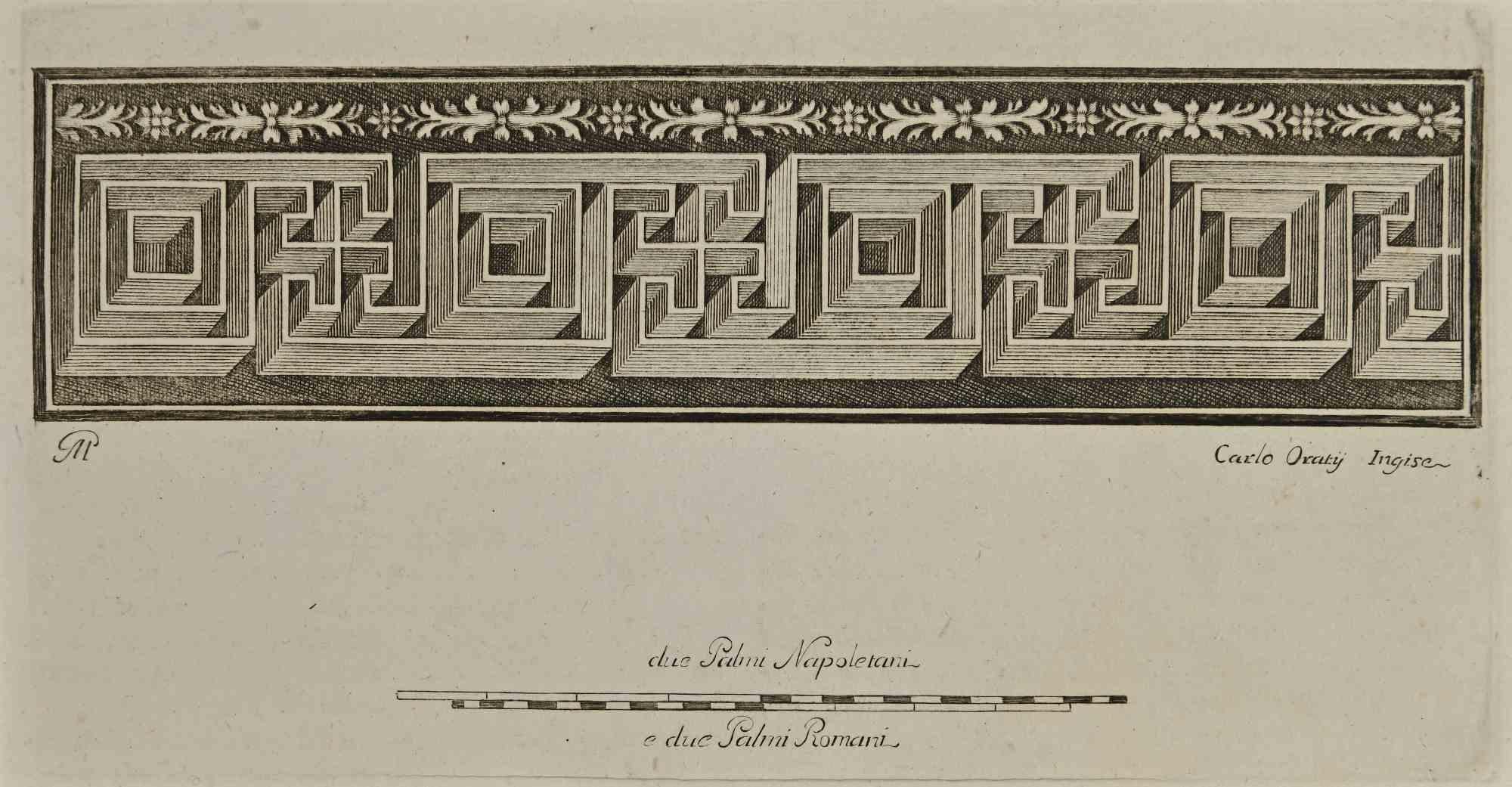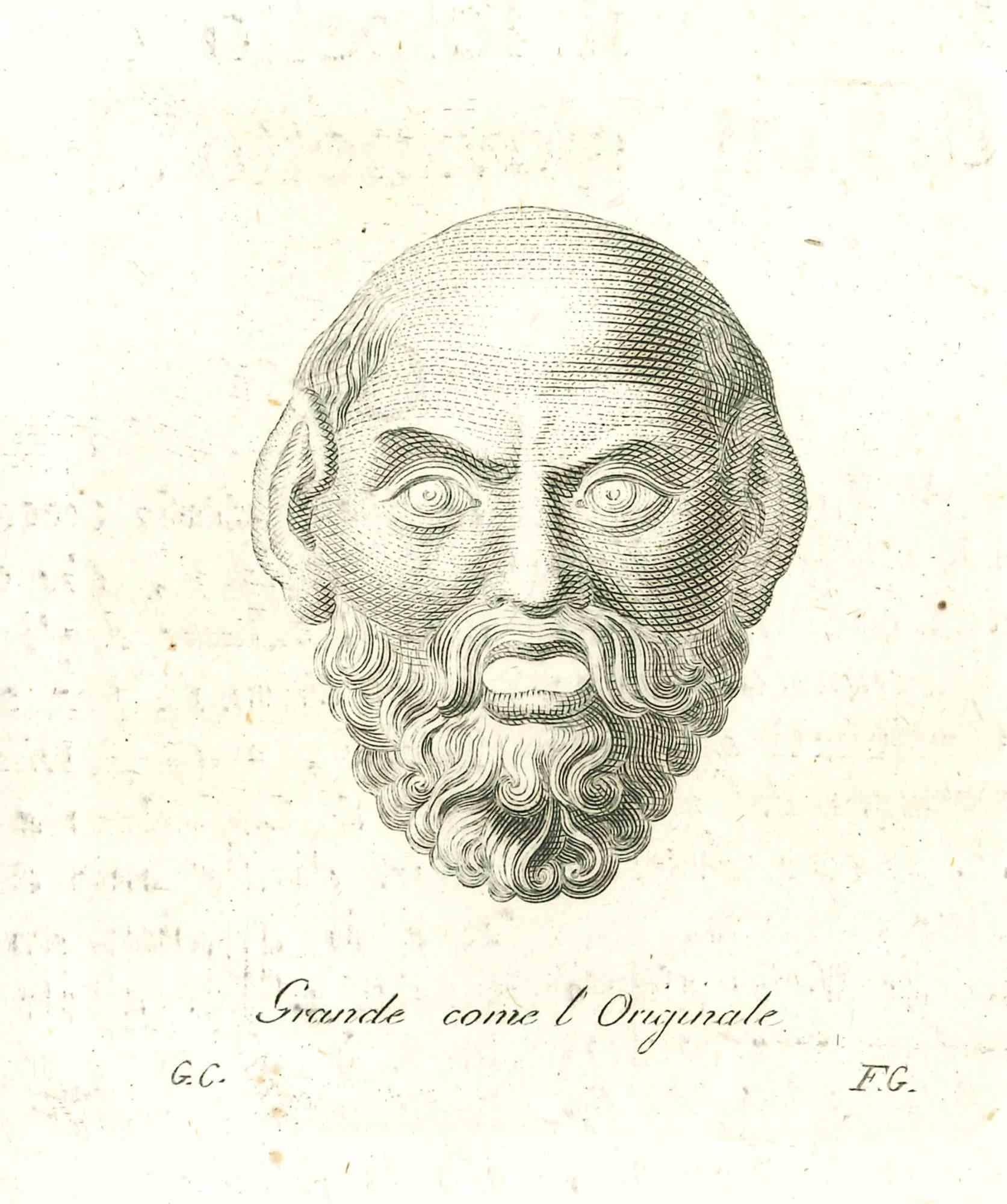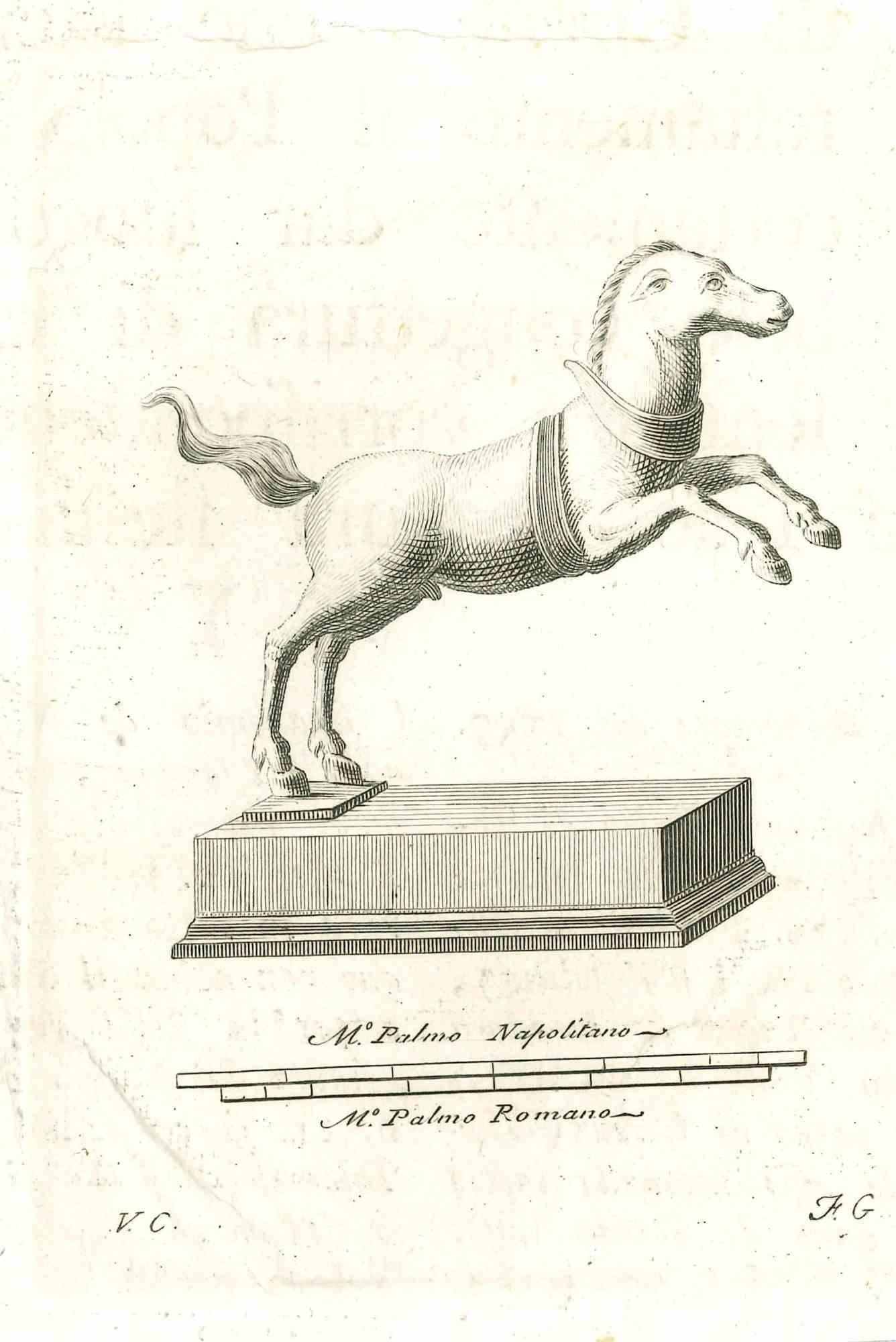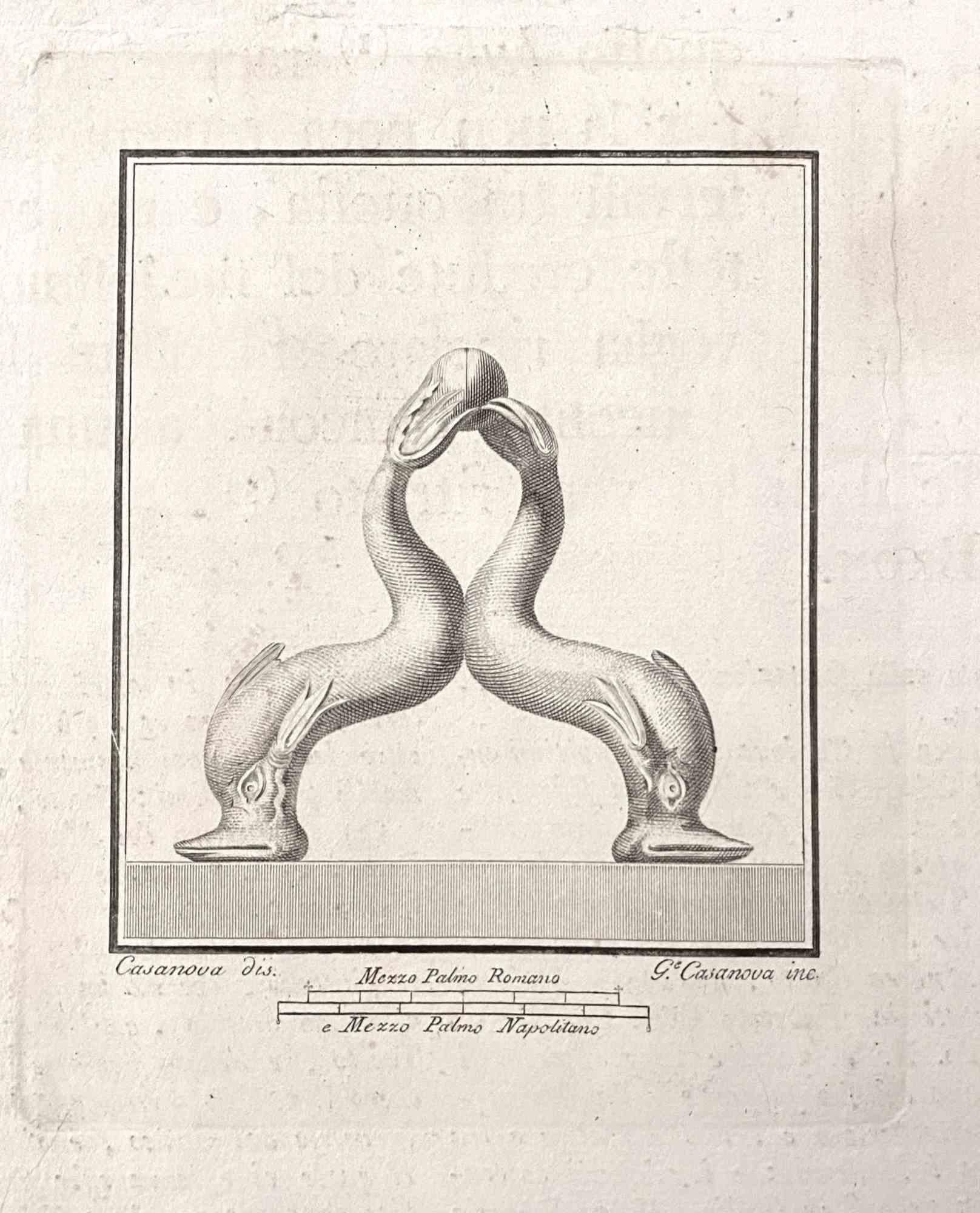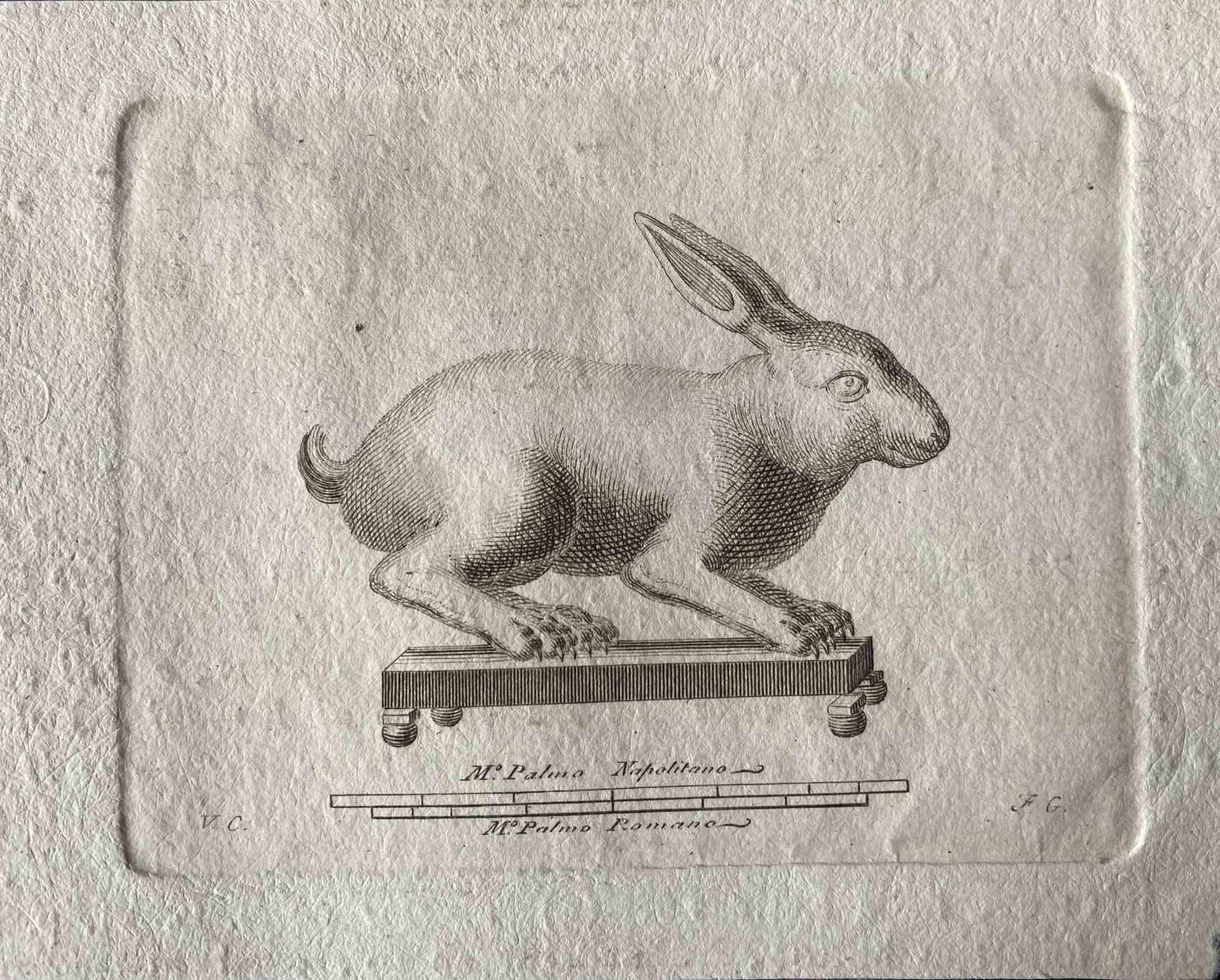Items Similar to Que se la Llevaron! - Etching by Francisco Goya - 1799
Want more images or videos?
Request additional images or videos from the seller
1 of 2
Francisco GoyaQue se la Llevaron! - Etching by Francisco Goya - 17991799
1799
About the Item
Que se la Llevaron! is an original etching realized by Francisco Goya in 1799, from Los Caprichos series.
The artwork is the plate 8 (as printed on plate on the higher right margin) from the series Los Caprichos, first edition.
Good conditions.
Los Caprichos.
Put on sale the 6 February 1799, at the end of the last carnival of the century, Los Caprichos, first Goya’s printed cycle created as a unit, can be located in a period of transition in the artist’s life. Actually, in the last decade of the eighteenth century, there were some facts very important for Goya, as the illness and the hearing loss.
These engravings are made in 1797 in Madrid, after the artist’s stay in Andalusia, where he was guest of the Duchess of Alba.
In 1797 Gaspar Melchor de Jovellanos, the most important deputy of the spanish Age of Enlightenment and Goya’s protector, accepted the Ministry of Mercy and Justice and started to promote a splendid environment for the artistic expression. The same year, the first version of this set (72 engravings) was printed entitled as Sueño 1º Idioma Universal. In january of 1799, the definitive edition (80 engravings) of the Caprichos was published.
This cycle can be divided into two parts, each of these is introduced by a self-portrait of the artist.
In the first self-portrait, that anticipates 41 realistic scenes (2-42), Goya represents himself as a middle-class man who has a sarcastic vision of the world, the main subject of his Caprichos. In the second portrait, he images himself asleep amidst his drawing tools, with monsters behind him produced by the reason dulled.
The Caprichos are a strong aesthetic and social provocation; french poet Baudelaire said about Goya’s masterpiece: “ No one artist more than Goya dared the sense of the absurd possible. All these contortions, these bestial faces, these diabolic sneers are infused with humanity […] it’s impossible find the suture, the point of union between real and fantastic; it’s a line so unclear that also the finest analyst can’t draw, in an art that is, at the same time, so transcendent and natural”.
Francisco José de Goya y Lucientes (March 30th 1746 - Bordeaux, April 16th 1828), Francisco Goya, the Spanish painter and printer, was one of the rare artists that, through their work, not only gain the recognition and admiration of their contemporaries, but influence the development of future art.
Born in Fuentedetodos to a middle-class family originating from Aragona, he was the forth of six brothers.
Studying with José Buzàn y Martinez, and in Madrid under Velasquez, and entered the group of R. Mengs where he met Tiepolo. After going to Roma and Venice, he returned to Spain to paint the dome of Santa Maria of Pilar basilica in Zaragoza with frescoes showing Tiepolo's influence. In Madrid he was uncomfortable with his academic style, despite the fame gained in the king's court for his very lively style and refined artistic taste. He had started his most productive and busy period of his life. He returned to Zaragoza to paint frescoes in the cathedral (commissioned by Bayeu) but left the work incomplete and instead started to paint portraits and also started “Caprichos”.
Goya's main success was under the reign of Carlo IV but when the power of Ferdinandi VII increased under the French occupation, he went into exile in Bordeaux. In 1799 he painted the family portrait of Carlo IV and attracted the friendship of the king. Goya was close to the poor, something that is reflected in the “Desastres de la guerra” print, and to which he dedicated his work during his stay in France. Goya travelled to Zaragoza to paint the companies of the Spanish resistance, but left Spain for Bordeaux after the onset of deafness and painted the Milkmaid of Bordeaux. He died in Bordeaux in 1828.
- Creator:Francisco Goya (1746 - 1928, Spanish)
- Creation Year:1799
- Dimensions:Height: 8.47 in (21.5 cm)Width: 5.99 in (15.2 cm)Depth: 0.08 in (2 mm)
- Medium:
- Movement & Style:
- Period:1790-1799
- Framing:Framing Options Available
- Condition:Insurance may be requested by customers as additional service, contact us for more information.
- Gallery Location:Roma, IT
- Reference Number:
Francisco Goya
Francisco José de Goya y Lucientes (1746-1828) was a Spanish romantic painter and printmaker. He is considered the most important Spanish artist of the late 18th and early 19th centuries. His works often contained a social message, like in his "Disasters of War" series. Immensely successful in his lifetime, Goya is often referred to as both the last of the Old Masters and the first of the moderns. He was also one of the great portraitists of his time.
About the Seller
4.9
Platinum Seller
These expertly vetted sellers are 1stDibs' most experienced sellers and are rated highest by our customers.
1stDibs seller since 2017
6,818 sales on 1stDibs
Typical response time: 3 hours
- ShippingRetrieving quote...Ships From: Rome, Italy
- Return PolicyA return for this item may be initiated within 14 days of delivery.
More From This SellerView All
- Ancient Roman Fresco Herculaneum - Etching by Carlo Oratij - 18th CenturyLocated in Roma, ITAncient Roman Fresco from the series "Antiquities of Herculaneum", is an etching on paper realized by Carlo Oratij in the 18th Century. Signed on the plate. Good conditions. The e...Category
Late 18th Century Old Masters Figurative Prints
MaterialsEtching
- Ancient Roman Relief - Original Etching - 18th CenturyLocated in Roma, ITAncient Roman Relief, from the series "Antiquities of Herculaneum", is an original etching on paper realized by an anonymous Artista in the 18th century. ...Category
Late 18th Century Old Masters Figurative Prints
MaterialsEtching
- Ancient Roman Statue - Original Etching by Vincenzo Campana - 18th CenturyBy Vincenzo CampanaLocated in Roma, ITAncient Roman Statue, from the series "Antiquities of Herculaneum", is an original etching on paper realized by Vincenzo Campana in the 18th Century. Signed on the plate on the low...Category
Late 18th Century Old Masters Figurative Prints
MaterialsEtching
- Ancient Roman Statue - Original Etching by G.Casanova - 18th CenturyLocated in Roma, ITAncient Roman Statue, from the series "Antiquities of Herculaneum", is an original etching on paper realized by G.Casanova in the 18th century. Signed on the plate on the lower right...Category
Late 18th Century Old Masters Figurative Prints
MaterialsEtching
- Animal Figures for Antiquities - Original Etching - Mid-18th CenturyLocated in Roma, ITAnimal Figures for the Antiquities of Herculaneum Exposed, original etching from the mid-18th century, made by Various Old Masters. In very good condition, except for some stains al...Category
18th Century Old Masters Figurative Prints
MaterialsEtching
- Ancient Roman Relief - Original Etching by Vincenzo Campana - 18th CenturyBy Vincenzo CampanaLocated in Roma, ITAncient Roman Relief, from the series "Antiquities of Herculaneum", is an original etching on paper realized by Vincenzo Campana in the 18th century. Signed on the plate on the lower...Category
Late 18th Century Old Masters Figurative Prints
MaterialsEtching
You May Also Like
- Bearded Man with Shadowed Face, Wearing a Scarf and a Plumed Hat, (3rd state)By Giovanni Benedetto CastiglioneLocated in Chicago, ILBearded Man with Shadowed Face, Wearing a Scarf and a Plumed Hat, (3rd state), 1645-50 Etching on laid paper 152 x 184 mm.; 6 x 7 1/4 inches References: Bellini 45 Bartsch 52 Note...Category
17th Century Old Masters Figurative Prints
MaterialsLaid Paper, Etching
- The SingersBy Adriaen van OstadeLocated in Chicago, ILThe Singers (4th State), 1667 Etching printed with tone 240 x 190 mm.; 9 1/2 x 7 1/2 inches Provenance: W. Benoni White (Lugt 2592) Karl Herweg (not in Lugt) References: Godefroy 19 IV/VII Hollstein 19 IV/VII Pelletier, Georgia Museum of Art, 1994: nos. 46 and 47 Notes: A very fine impression of the rare 4th state (of seven) of this major Van Ostade. Godefroy illustrates differences between this 4th state and the following 5th state. In the latter state, there are several “escaped lines”, going obliquely from left to right, directly above the central post. These lines are not visible in the 4th state. Ostade was one of the most important of the printmakers within the Rembrandt circle. His prints, avoiding religious subjects, depicted beggars, peasants and artisans. Combining great artistic sensitivity with thorough mastery of the medium of etching, Ostade etchings present a unique artistic panorama of life in seventeenth-century Holland. Pelletier (S. William Pelletier, Adrian Van Ostade...Category
17th Century Old Masters Figurative Prints
MaterialsEtching
- The Hunchbacked Fiddler (3rd State)By Adriaen van OstadeLocated in Chicago, ILThe Hunchbacked Fiddler (3rd State), 1654 Etching 266 x 113 mm.; 6 1/2 x 4 7/16 inches Watermark: Fleur-de-lys in a Crowned Shield References: Godefroy 44 III/VI Hollstein 44 III/VI Pelletier, Adrian van Ostade...Category
17th Century Old Masters Figurative Prints
MaterialsEtching
- "Perseus and Andromeda, " an Etching by Alexander RuncimanBy Alexander RuncimanLocated in Milwaukee, WI"Perseus and Andromeda" is an original etching by Scottish artist Alexander Runciman, signed in the lower left area of the plate. It depicts Perseus on the left swinging his shield and a young woman, Andromeda, on the right shielding her gaze. Andromeda is to be sacrificed to a sea-monster to save her city, but Perseus rescues her from this fate by slaying the beast. 5 3/4" x 9 1/2" art 16 1/4" x 20 1/4" frame Alexander Runciman (1736-1785) was a Scottish painter of historical and mythological subjects. He was born in Edinburgh, and studied at the Foulis Academy, Glasgow, and from 1750 to 1762 he was apprenticed to the landscape painter Robert Norie, later becoming a partner in the Norie family firm. He also worked as a stage painter for the Theatre Royal in Edinburgh. In 1767, he went to Rome, where he spent five years. During Runciman's stay in Italy he became acquainted with other artists such as Henry Fuseli and the sculptor Johan Tobias Sergel...Category
1770s Old Masters Figurative Prints
MaterialsEtching
- Descending from the Cross, by TorchlightBy Rembrandt van RijnLocated in New York, NYRembrandt Harmensz. van Rijn 1606 Leiden – Amsterdam 1669 The Descent from the Cross by Torchlight 1654 etching and drypoint; sheet 213 x 163 mm (8 3/8 x 6 7/16 inches) Bart...Category
17th Century Old Masters Figurative Prints
MaterialsDrypoint, Etching
- Ancient Roman Architectural Frieze: An 18th C. Piranesi EtchingBy Giovanni Battista PiranesiLocated in Alamo, CAThis framed original 18th century etching is entitled "Fregio antico di marmo con Ippogrifi, nel cortile del palazzo della Valle" (Ancient Marble Frieze with Hippogriffs in the Courtyard of The Palace of the Valley). The etching is by Giovanni Battista Piranesi, published in Rome in 1778. It is from Piranesi's monumental work "Vasi, Candelabri, Cippi, Sarcofagi, Tripodi, Lucerne, Ed Ornamenti Antichi", (Vases, candelabra, grave stones...Category
Early 18th Century Old Masters Figurative Prints
MaterialsEtching
Recently Viewed
View AllMore Ways To Browse
Antique Se
Old Man Face
16th Century Style Portrait
Antique Drawing Tools
R T Facts
Goya Engraving
Goya Caprichos
Etching Portrait Of King
Antique Santa Plate
Goya 1799
Los Caprichos
Goya Los Caprichos
Tiepolo Etching
Goya Self Portrait
R Dull
Francisco Goya Y Lucientes
Goya Los Desastres De La Guerra
Los Desastres De La Guerra
